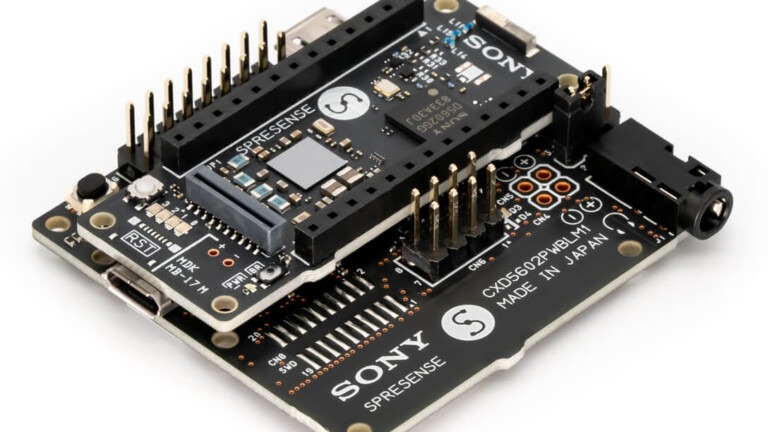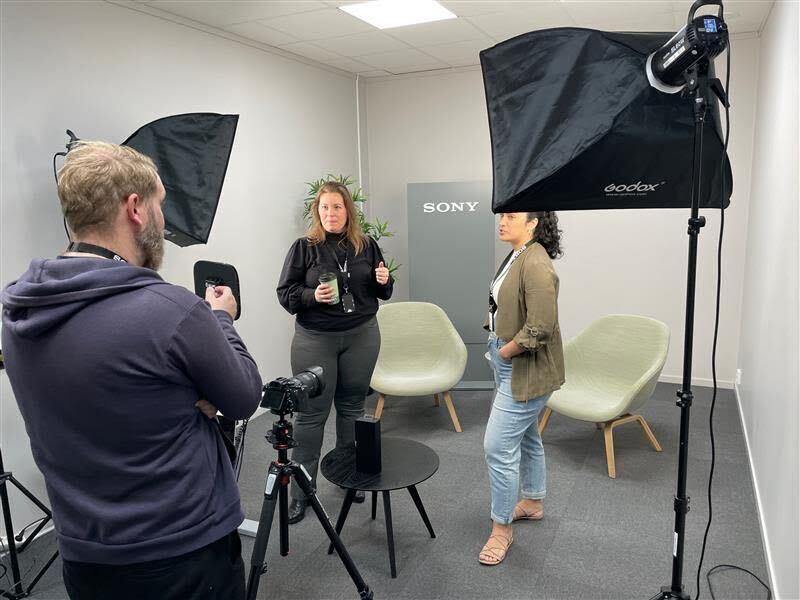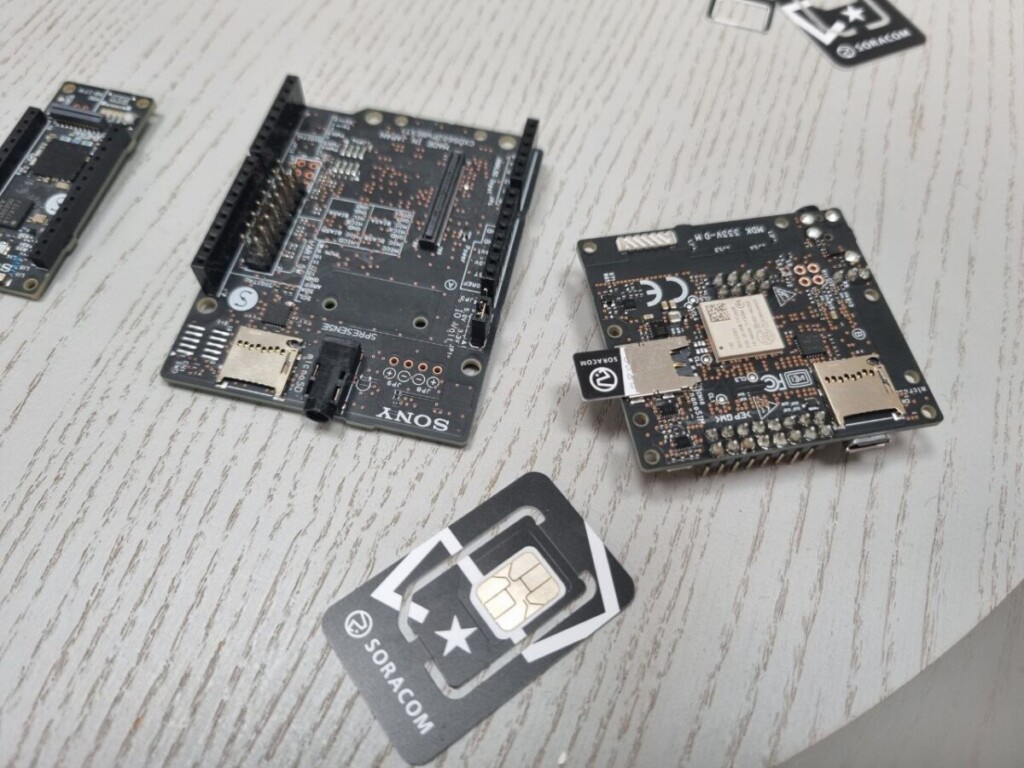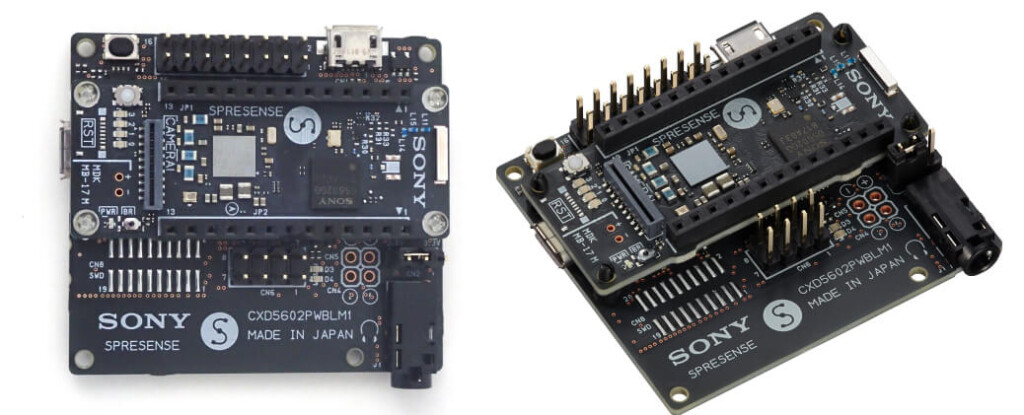How Sony’s Spresense Supports Innovative IoT Projects

Sony’s Spresense is a multicore, high-performance, power-efficient, 156-megahertz microcontroller board that offers a number of valuable features, a compact footprint, and supports cellular connectivity. It can empower IoT deployments that need sensor analysis, machine learning, image processing, and data filtering, and can operate through a variety of development environments.
As global partners, Soracom and Sony’s Spresense are working together to open up opportunities for innovative IoT projects that take full advantage of Spresense’s power and Soracom’s connectivity. We spoke with Dora Terjek, IoT Device Product Manager at Soracom, about what makes Spresense such a strong component in an IoT deployment, and how it is changing the game for IoT developers.

Soracom: What are some of the features that make the Spresense stand out?
Dora Terjek: During our webinar, Let’s Talk IoT Devices: Sony’s Spresense, which is currently available on-demand, we walk the audience through the actual features and capabilities of each and every board that is part of the Spresense portfolio.
There is the main board, which is based on Sony’s own powerful processor and includes 8MB flash memory. It also features a dedicated camera connector and multiple pins and LEDs. There is a GNSS (GPS) antenna that really makes the Spresense stand out – you can use the board for tracking purposes. There are two different extension boards you can choose from to connect to the Spresense main board:
- The Spresense Extension Board augments the main board with a headphone jack, an SD card slot, a micro USB port, and multiple microphone pins. It also provides pin compatibility with selected Arduino shields.
- The LTE extension board features an onboard antenna, a cellular module that supports LTE Cat-M1 (LTE-M) connectivity, and a SIM slot. This LTE Extension Board is also equipped with pin headers for microphone input, digital input/output, and analog input. You can easily turn it into a smart speaker and talk to someone through the board.
Everything connects so easily together, which ensures modularity, not only between the Spresense pieces but also between other Arduino accessories. You can pick and mix these different hardware items together and have the option to select between three different software development environments to get the pieces up and running.
Then there’s the camera board where we have the two different cameras.
Soracom: What’s the difference between the two cameras?
Dora Terjek: The main difference is their size, their pixel count, and the conditions they can operate in. The HD camera is a little bit bigger, has an interchangeable lens, and it can capture images even in low-light conditions or from close-ups. The Spresense camera board can capture a higher pixel resolution, but it is recommended for indoor usage. An engineer can select between the two based on their specific use case.
For example, one of the applications we are looking at together with Sony is how to cut down on non-electric cars parking in spaces that have public EV charging stations. By having a camera installed on top of the parking meter, they can keep tabs on who is using the space. If someone has parked in that spot who cannot use the charger, an operator can use the audio capability of this board to tell them to leave. It’s a very practical use case.

Soracom: What are some other use cases where this hardware is especially effective?
Dora Terjek: So the great thing with Spresense is that it fits a lot of different IoT applications, from robotics to precision agriculture to smart parking and EV charging. You can use the hardware for literally any use case.
One of the flagship use cases of Sony’s Spresense is smart agriculture. Farmers can use drones equipped with cameras to monitor the growth of their crops and how much water they need. Spresense can also rely on controllers and sensors in the soil that monitor its state and how much water it is retaining. When you layer in machine learning and AI to analyze the data, it’s an amazing way to use this hardware.
Some really interesting use cases surfaced from a Hackster contest Sony ran a couple of months ago, too. Students from around the world contributed ideas for ways to apply the Spresense to their areas of expertise and study. The Grand Prize projects included the following use cases:
- Identifying poor driving habits in new drivers – including everything from cellphone use to improper hand positions on the wheel to too-tight turns – and using AI to notify drivers in real time when they exhibit an unsafe driving habit. It’s super cool.
- Detecting accuracy in 3D-printed dental casts to assist dental technicians in improving their work and better serving patients. It just blew my mind when I saw it!
- Deploying a deep neural network on the microcontroller for real-time bionic arm control. They really went out of the box, and they used it to build a prototype to control a bionic arm in real time. We are living in the future.
Soracom: What is unique about the connectivity of the Spresense board, and why do Soracom and Spresense work so well together?
Dora Terjek: When you match Spresense with an IoT SIM and connectivity from Soracom, you can build something truly outstanding. As we mentioned earlier, the LTE extension board provides global cellular connectivity to LTE Cat-M1 networks. This enables the board to transmit data over cellular globally. The LTE extension board has the actual SIM slot, and this is where a nano (4FF) SIM card would fit in. LTE-M is a relatively new technology that emerged with the sunset of 2G/3G. It’s based on 4G, and we consider it the technology paving the way toward 5G.
Very often, IoT use cases require cellular connectivity. When we think about the agriculture drone that would fly over the fields, you typically cannot cover those fields with Wi-Fi or ethernet. With the Spresense, you simply need to put the SIM card into the LTE extension board, enable cellular connectivity, and make sure the required coverage is available. In the case of a drone, it can also capture available data and then send it via the SIM card.

Soracom: Who is the ideal customer for Spresense, and how easy is it for them to get up and running?
Dora Terjek: The ideal user could be a hobbyist back in his garage and about to build a prototype for a brilliant idea that can drive a startup, or it could be an R&D engineer from a bigger company who would like to run an IoT proof of concept and connect a microcontroller for a specific use case. It’s anyone and everyone because of Spresense’s flexibility, modularity, and ease of use. It’s very easy to get started, especially because of the detailed documentation provided by Sony.
Sony has done an incredible job building an area on their website called Sony Developer World, where they have all their technical documentation (including Getting Started Guides, API References, and Hardware Guides), a detailed forum where anyone can come and ask questions. This is also where they store their tutorials and a lot of video materials and webinars. There is also a YouTube channel with the same focus. They’re very well prepared to help anyone who wants to start prototyping with them.
Soracom: If a company is getting up and running with Spresense, what team members would they need to support that process?
Dora Terjek: They would need an engineer with some programming skills. That engineer needs to choose between one of these three development environments: the original Spresense one based on NuttX, the Arduino IDE, and CircuitPython.
The good thing is that no one needs to do a lot of soldering, for instance, because this board has such a modular approach. You can really just plug and play the different components.

Soracom: How does Spresense fare in terms of total cost of ownership?
Dora Terjek: Spresense is not cheap, but with the price comes quality. So if you are after a low-power, high-performance microcontroller board with hi-res audio, camera input, internal GPS, and Edge AI support, then Sony’s Spresense is the right hardware choice for you.
Soracom’s Sony Spresense LTE-M IoT Connectivity Kit includes the Spresense main board, the LTE extension board, as well as a Soracom SIM. When customers purchase a kit through Soracom, they also receive a coupon for $10 that you can use not only for connectivity but also for any of our application layer services. We have a lot of those – including a VPN service, data storage, and data visualization.
Spresense has been around since 2018, and Sony has developed the hardware based on continuous user feedback and different use cases. You won’t need to upgrade outdated components in six months; they will last quite some time. I would also say the microcontroller is very powerful. When you invest in Spresense, you definitely get a long-term solution that’s going to be still valuable in, let’s say, five years’ time – especially with this type of connectivity.
It’s also good to remember that, because of the low power efficiency, it’s extremely well suited for use cases where you need a battery, which is also a very important consideration when you pick your microcontroller.
***
To learn more about Soracom’s global partnership with Sony and how the Spresense can benefit your IoT projects, check out our on-demand webinar, “Let’s Talk IoT Devices: Sony’s Spresense.” And if you have any questions about an IoT project you are working on, we would love to hear from you!



